Combination Cookers
In the 1930s and 1940s, more than one individual filed for and received a patent for what are termed combination cookers. Combo cookers, as they are also known, were multi-purpose utensils with various parts designed to, separately and in combination, cook multiple foods simultaneously.
Double skillet sets, in which the cover also served as an additional skillet, had existed previously, but the combination cooker took the concept of multi-piece versatility addditional steps further.
Typically, combo cookers consist of three pieces: a deep pot, a shallow pot or chicken fryer which fits into the deep pot, and a skillet/cover which fits either.
- The cover can serve as a skillet.
- The cover and deep pot serve as a dutch oven.
- The shallow and deep pots together can function as a double boiler.
- All three pieces combined allow for the covered cooking of two separate foods simultaneously.
Some cookers had as many as five pieces available, including skillet/covers of differing depths and dome lids with top handles.
The following are some of the known combo cooker types you are likely to encounter.
John C. Johnson
In 1934, John C. Johnson was awarded a patent for a "Combination Cooking Utensil".
USD91487  (1934) - Combination Cooking Utensil (John C. Johnson)
(1934) - Combination Cooking Utensil (John C. Johnson)
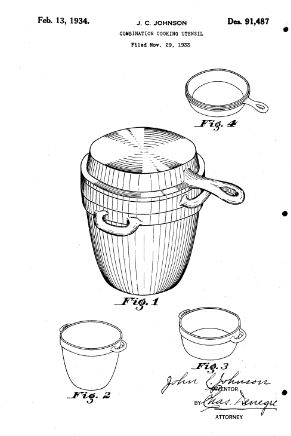
Johnson's cooker featured loop handles on the deep and shallow pots, and its skillet/cover's flat surface allowed for the possibility of stacking another pan on top.
Edward W. Blankenship
In 1940, Edward W. Blankenship was awarded a patent for a "Combination Cooking Vessel".
US2199687  (1940) - Combination Cooking Vessel (Edward W. Blankenship)
(1940) - Combination Cooking Vessel (Edward W. Blankenship)
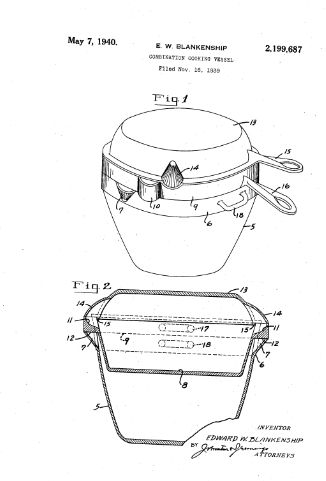
Blankenship's cooker featured loop handles on the deep pot. Its shallow pot had a handle and proportions more like a deep skillet. Like Johnson's design, its skillet/cover's flat surface allowed for the possibility of stacking another pan on top.
Projections on all three pieces served as pour lips, but, when rotated out of alignment with each other, functioned as vents. Blankenship's patent described these as both functional and safety features.
Jones Machine & Foundry Co.
In the 1940s, Jones Machine & Foundry Co. of Chattanooga, TN marketed a four-piece combo cooker consisting of a deep pot (with bail?), a chicken frier, a deep skillet/lid, and a shallow skillet/lid. Sources indicate the unit was marketed directly to consumers as well as through Sears, Roebuck & Co. and possibly other retail or hardware stores.
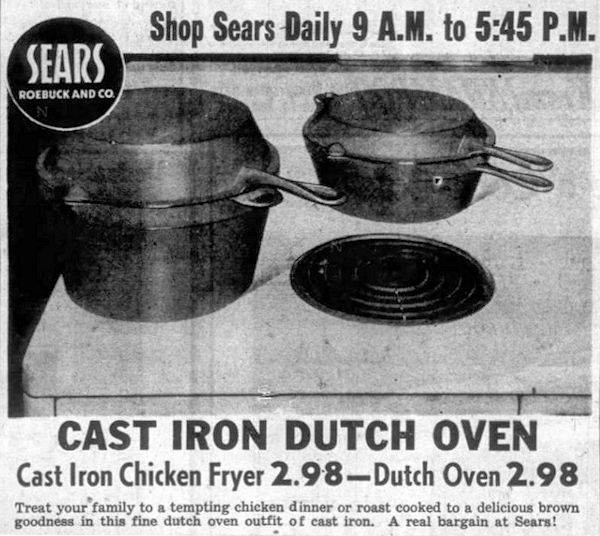
Sears, Roebuck ad, 1945
The Jones cookers are discernible by their "offset" tab handles which, rather than projecting straight out from the rims of the skillet/lids, are angled upward (or downward, depending) before leveling off. Each piece has one or two undivided loop handles and two small pour lips.
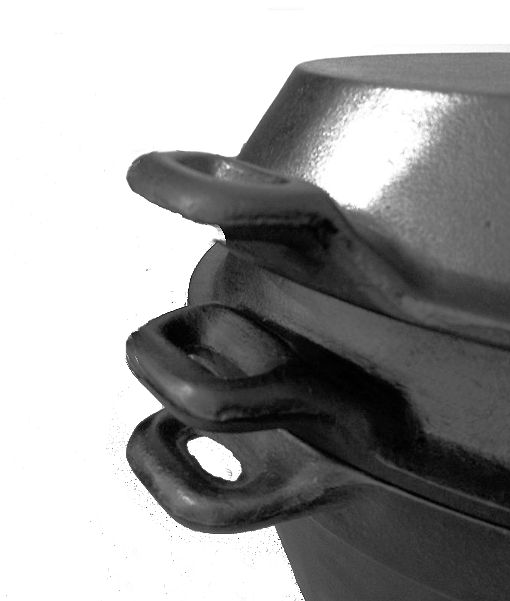
The Jones cookers are also seen in toy form, faithfully reproducing the offset tabs on the skillet/lids.
Smith Co.
In 1940, William B. Smith was awarded a patent for a "Combination Cooking Vessel".
US2223432A  (1940) - Combination Cooking Vessel (W.B.Smith)
(1940) - Combination Cooking Vessel (W.B.Smith)
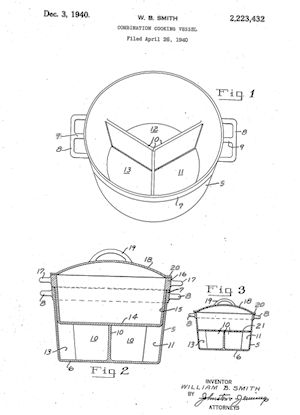
Smith's cooker featured squared-off divided loop handles. The patent drawing shows a cover like a dutch oven, no pour lips and the bottom pot partitioned into three sections.
Actual pieces assumed to be Smith Co. have skillet handles for the chicken fryer and skillet/lid parts. The skillet/cover has an offset assist handle like the Jones, but with a divided loop.
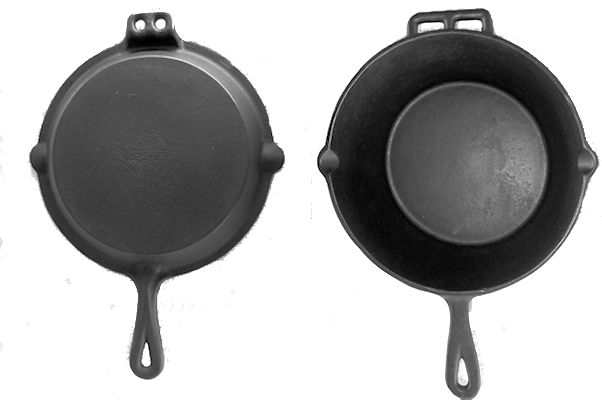
Unknowns
Other cookers of similar design exist, but their provenance is uncertain. They also often serve as points of confusion, as their parts sometimes fit reasonably well with those of other makers.
One such often seen is described as the "Tab & Notch" combo cooker. Its pieces each have tabs on and grooves in the rims which engage each other when the pieces are uniformly aligned. If there is a function to them beyond that, it is unclear. Perhaps the tab and notch arrangement was simply a device to circumvent claims of patent infringement.
Collecting vintage combo cookers can be daunting when all the parts are not found together, so it is best to familiarize yourself with the various types before purchasing any orphaned parts.








